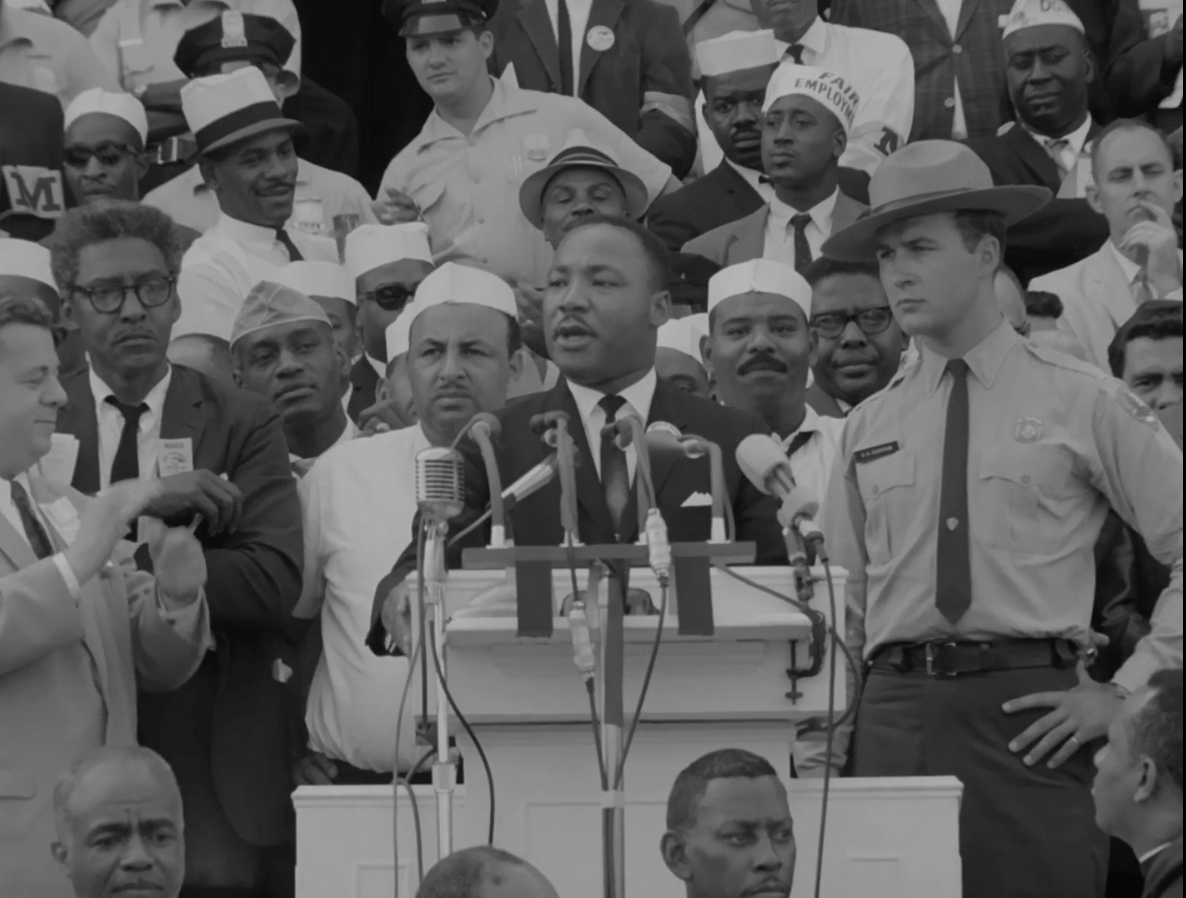Themes

Dr. Martin Luther King, Jr., speaking at the March on Washington. Bayard Rustin, an organizer of the March, is the man to King’s right in the dark suit and glasses. Still from The March by James Blue, 1964.
Historians agree that the March on Washington was a high point of the long Civil Rights Movement.
Blue’s film of the March captures the movement’s rhetorical signature, which includes explicit condemnations of racism and federal inaction joined to an anti-racist platform that included a commitment to nonviolence, a prophetic theology, the use of protest spirituals, interracial collaboration, a dedication to constitutional ideals, and carefully calibrated condemnations of American apartheid yoked to a vision of America’s promise.
Blue’s film features the planning of the March of Washington, which was the responsibility of Bayard Rustin (shown to the left of King in the image above), and the soaring oratory of Martin Luther King.
To learn more about the broader Civil Rights Movement, see Making the March on Washington and check out the videos on Meaning of the March.
